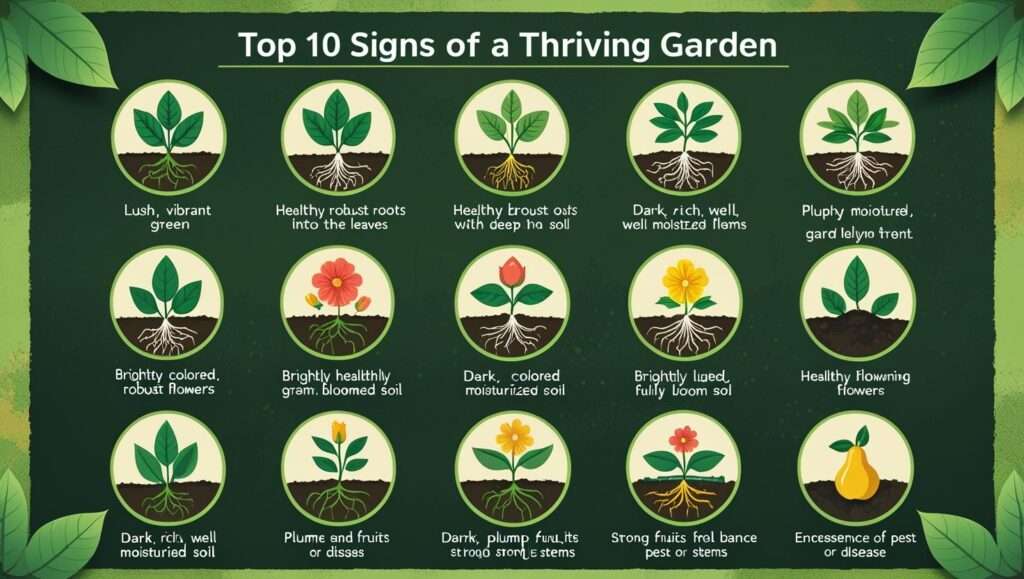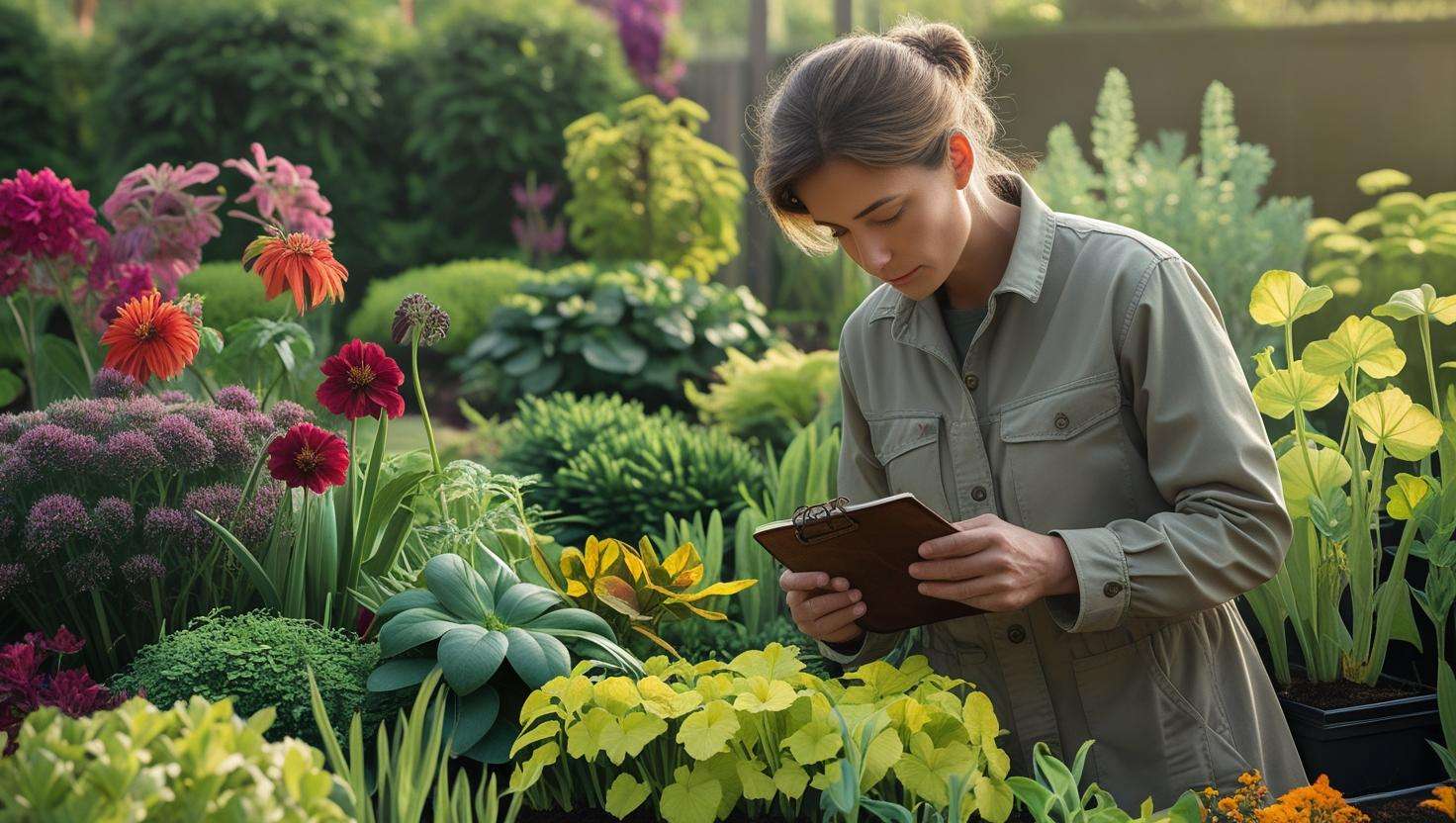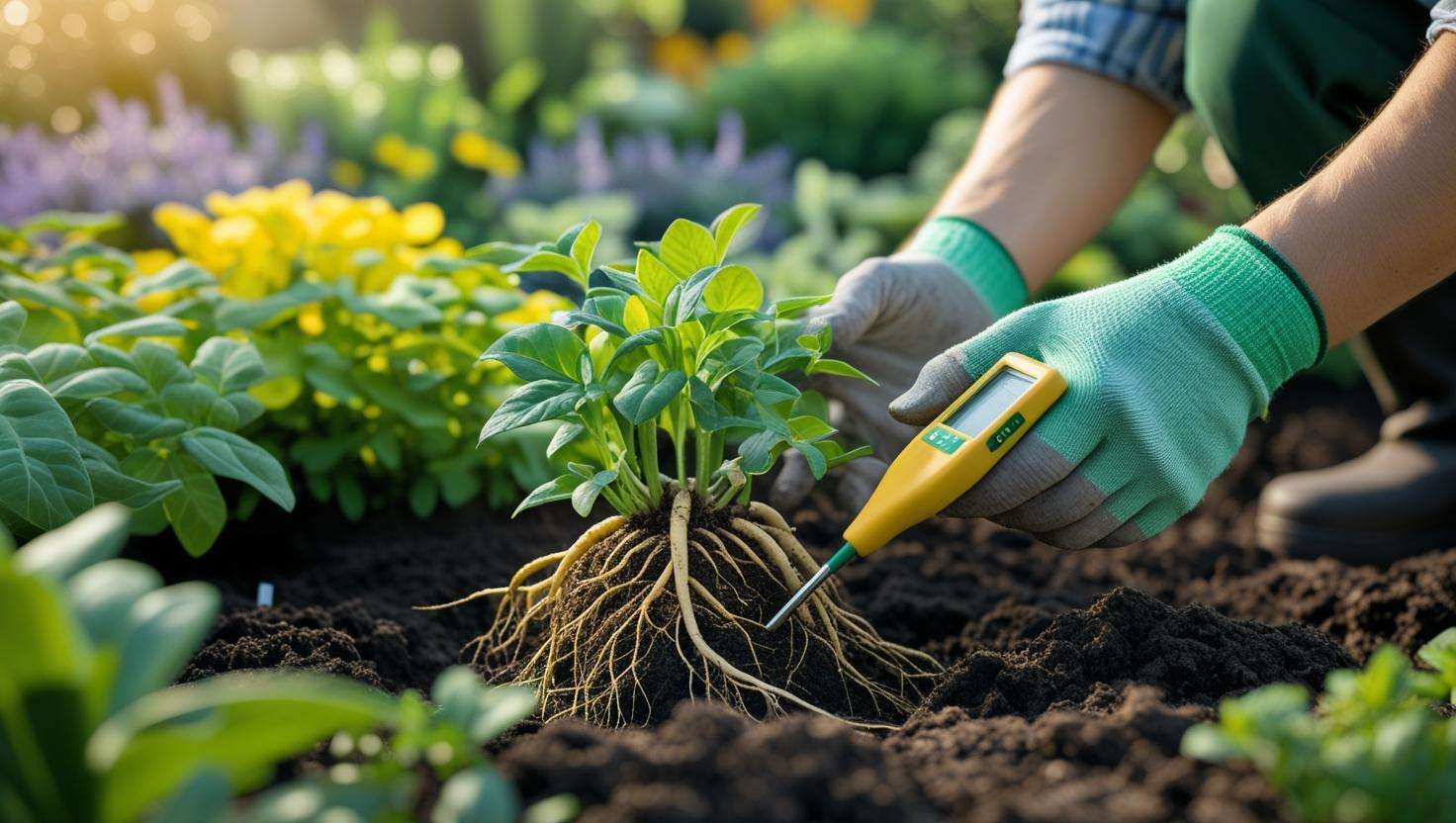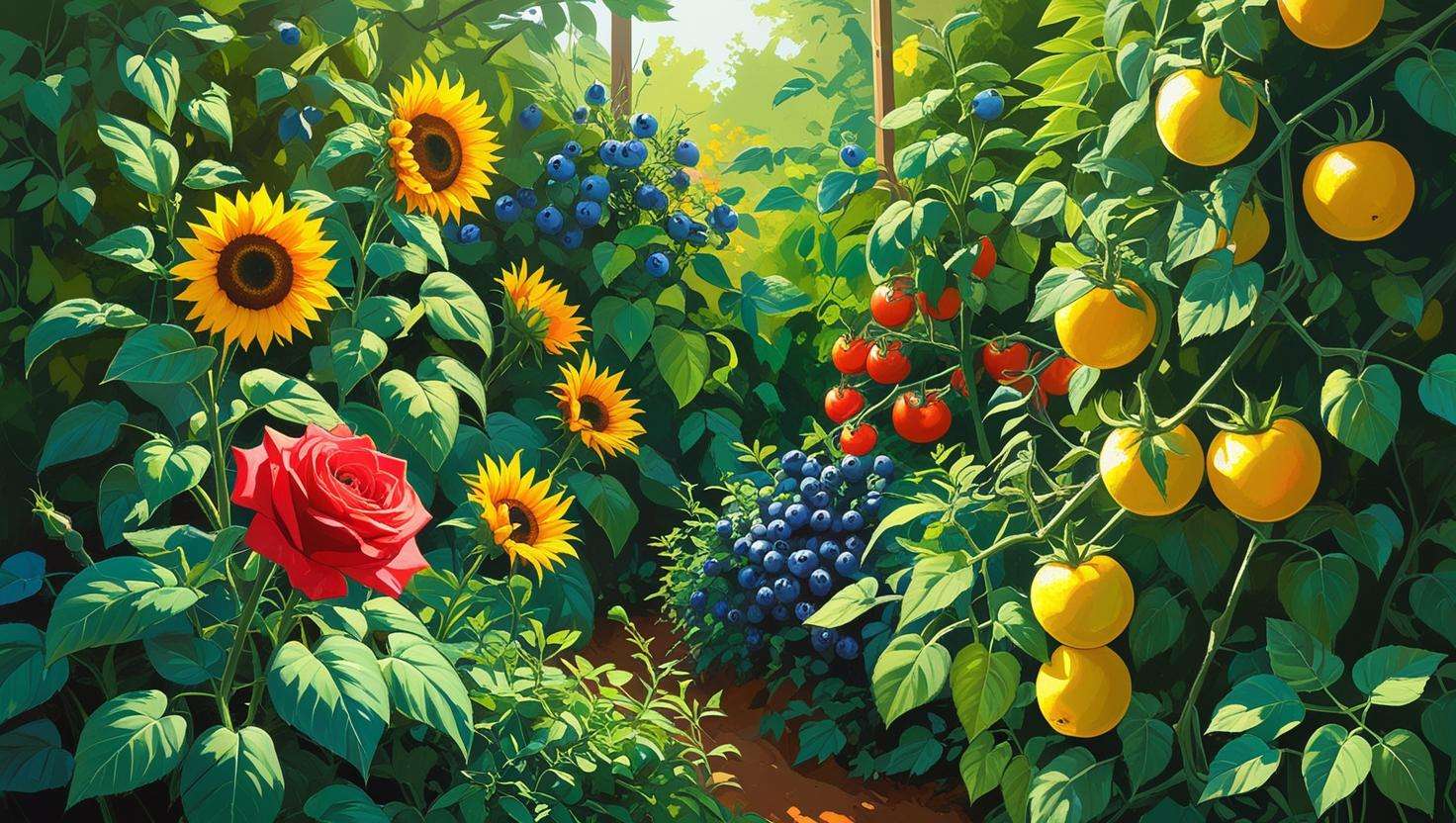
Top 10 Signs for Gardening That Every Green Thumb Should Know to Boost Your Garden's Growth
Gardening is more than just a hobby; it’s a rewarding way to connect with nature and create a thriving, beautiful space 🌱. But if you’ve ever found yourself puzzled over why your plants aren’t growing as expected or why your garden seems to be struggling, you’re not alone. The key to boosting your garden’s growth lies in recognizing the signs for gardening that every green thumb should know. 🌸
Understanding the subtle cues your plants give you—whether it’s a change in leaf color, unusual growth patterns, or the presence of pests—can make all the difference in how well your garden thrives. Without these signs, it’s easy to overlook critical issues until it’s too late.
In this article, we’ll explore the top 10 signs for gardening that every gardener—beginner or seasoned—should know. By learning to read these signals, you’ll be able to troubleshoot problems early, take the right actions, and see your garden flourish like never before. Ready to unlock the secret to a healthier, more vibrant garden? Let’s dive in! 😊
Table of Contents
ToggleUnderstanding the Importance of Signs in Gardening
As a gardener, whether you’re a beginner or an experienced pro, understanding the signs your plants give you is crucial for their health and growth 🌿. Plants communicate with us constantly, but we often miss the messages. These “signs for gardening” aren’t just random occurrences—they are vital clues that tell us when something’s working well or when it needs attention.

Why Recognizing Signs Matters
Recognizing these signs is like having a garden manual built right into your plants. By paying attention, you can:
- Spot problems early: Early detection of pests, diseases, or environmental stress helps you take action before issues spiral out of control.
- Tailor your care: Every plant has different needs, and understanding their signs lets you adjust watering, light, or soil conditions accordingly.
- Boost plant health: Healthy plants that are cared for based on their signals are more resilient to pests, diseases, and weather changes 🌞.
- Save time and effort: By addressing issues early, you’ll avoid wasted resources and unnecessary treatments that could harm your plants.
The Garden as a Living System
Think of your garden as a delicate ecosystem. Each plant, from the tiniest seedling to the tallest tree, plays a role in the overall health of the space. When plants are happy, they grow, bloom, and produce—offering you fruits, flowers, and vegetables in return for your care. But when they aren’t thriving, they’ll give you signs to help you understand what’s wrong. Recognizing those signs means you can make timely decisions that ensure your garden flourishes year after year 🌸.
So, instead of guessing, you’ll know exactly what your plants need and when they need it. This is why understanding the importance of these signs is essential for creating a garden that truly thrives.
In the next section, we’ll dive into the top 10 signs for gardening that will help you keep your green space healthy and vibrant. Ready to become the ultimate garden detective? Let’s go! 🕵️♂️🌱
The 10 Most Crucial Signs for a Thriving Garden
Understanding the signs your plants are giving you can transform your garden. Whether you’re growing vegetables, flowers, or shrubs, recognizing these key signals will ensure that your garden thrives. Here are the 10 most crucial signs for gardening that every green thumb should know.
1. Healthy, Vibrant Leaf Color 🌿
What it means: Bright green leaves (or the specific color for different plants) indicate that your plants are healthy and well-fed. If the leaves start turning yellow or pale, it’s often a sign of a nutrient deficiency or watering issues.
What to do: Check your soil’s nutrient levels, and make sure your plants are receiving adequate sunlight and water. Yellowing leaves could also indicate that the plant is stressed from too much water or poor drainage.
2. Strong Root Systems 🌱
What it means: A healthy root system is the backbone of a thriving plant. When roots are firm, white, and abundant, your plant is in good shape. Weak or rotting roots often lead to stunted growth or wilting.
What to do: Gently pull the plant from its pot or garden bed to check the roots. If they are dark or mushy, it could be a sign of overwatering or root rot. Trim the affected roots and adjust watering practices.
3. Abundant Flowering and Fruit Production 🌸🍓
What it means: Flowers and fruit are signs that your plant is happy with its environment. A healthy plant will bloom or produce fruit in the appropriate season.
What to do: Make sure your plant is receiving the right amount of sunlight, water, and nutrients for its type. For fruit-bearing plants, ensure proper pollination by attracting bees and other pollinators.
4. Smooth, Even Soil Moisture 💧
What it means: Healthy soil should hold moisture evenly without becoming waterlogged or dry. If the soil is too wet, plants can suffer from root rot. If it’s too dry, plants may become stressed and wilt.
What to do: Regularly check soil moisture using a moisture meter or by simply sticking your finger in the soil. Adjust your watering routine to ensure that your plants aren’t receiving too much or too little water.
5. Lack of Pests or Disease 🐞
What it means: A healthy garden will have fewer pests and diseases. While some insects are beneficial (like ladybugs), an overpopulation of pests can harm plants, while diseases can stunt or kill them.
What to do: Regularly inspect leaves and stems for pests. Use organic pest control methods such as neem oil or introduce natural predators to keep pests under control.
6. Consistent Growth Patterns 🌿
What it means: Plants should show consistent growth throughout the season. If growth suddenly slows down or becomes uneven, it could be a sign of stress or environmental factors affecting the plant.
What to do: Track your plant’s growth over time. If you notice a sudden drop, check for issues like poor soil conditions, lack of nutrients, or pest problems. Ensure your plant is getting the appropriate care it needs.
7. No Wilt or Drooping 🌱
What it means: Healthy plants stand tall and firm. If you notice that your plants are wilting or drooping despite regular watering, it could indicate poor root health or nutrient imbalance.
What to do: Check the roots for rot or compacted soil. If everything looks fine, consider adjusting your watering practices—either watering more thoroughly or ensuring proper drainage.
8. Balanced Pest Control and Beneficial Insects 🐝
What it means: A thriving garden will have a balance of pests and beneficial insects. Beneficial insects like ladybugs and bees play an essential role in keeping harmful pests in check and aiding pollination.
What to do: Encourage beneficial insects by planting a variety of flowers and herbs that attract them. Avoid overusing chemical pesticides, which can harm these helpful bugs.
9. Healthy Soil pH Levels 🌍
What it means: Plants thrive in soil that has the right pH level. Soil that’s too acidic or too alkaline can prevent plants from absorbing essential nutrients, leading to poor growth.
What to do: Test your soil’s pH with a kit. Most plants prefer slightly acidic to neutral soil (pH 6-7). Adjust soil pH by adding lime to raise it or sulfur to lower it, depending on your plant’s needs.
10. No Foul or Strong Odors 👃
What it means: A healthy garden should not have a strong, unpleasant smell. A foul odor could indicate rot, disease, or poor soil drainage.
What to do: Ensure proper soil drainage, avoid overwatering, and remove any decaying organic matter. If odors persist, inspect your plants for disease or root rot.
By keeping an eye out for these 10 crucial signs, you’ll be able to detect issues early, improve your plant care routine, and create a more vibrant, thriving garden. Ready to dive deeper into solving specific garden problems? Let’s move on to the next section! 🌻
How to Address the Warning Signs in Your Garden
Now that you know the top signs to look for in your garden, it’s time to tackle any issues that may arise. Addressing these warning signs quickly will keep your garden on track for optimal growth. Let’s explore practical steps to solve the common problems gardeners face.

1. Yellowing Leaves 🌿
Problem: Yellow leaves often signal nutrient deficiencies, poor soil drainage, or overwatering.
Solution:
- Check for drainage: Ensure your plants are in well-drained soil. Excess moisture can lead to root rot.
- Adjust watering: Water your plants deeply but less frequently to encourage strong roots.
- Nutrient boost: If the soil lacks nutrients, add compost or a balanced fertilizer. For nitrogen deficiency, consider adding organic fertilizers like fish emulsion.
2. Wilting or Drooping Plants 🌱
Problem: Wilted plants can be a sign of both underwatering and overwatering, or a sign of poor root health.
Solution:
- Inspect the roots: Gently pull up the plant to check the roots. If they’re rotting, trim them back and improve soil drainage.
- Water correctly: If the soil is dry, water thoroughly. If it’s soggy, ensure your plants are not sitting in standing water and adjust your watering schedule.
- Check the environment: Ensure your plant is in a location with the right light and temperature conditions. Too much heat or cold can also cause wilting.
3. Pest Infestations 🐞
Problem: An overabundance of pests, such as aphids, spider mites, or slugs, can harm your plants, stripping leaves and causing stunted growth.
Solution:
- Natural pest control: Use neem oil, insecticidal soap, or a mixture of water and dish soap to safely remove pests from your plants.
- Encourage beneficial insects: Invite ladybugs, lacewings, or predatory beetles to your garden by planting flowers like marigolds and lavender, which attract them.
- Hand-pick pests: For smaller infestations, remove pests manually. Just be sure to check regularly!
4. Stunted Growth 🌱
Problem: Slow or no growth is often caused by nutrient deficiencies, poor soil, or lack of sunlight.
Solution:
- Fertilize: Add compost or a slow-release balanced fertilizer to your soil to ensure your plants have all the nutrients they need.
- Check soil health: Test your soil’s pH and nutrient levels. If the soil is too acidic or alkaline, amend it accordingly to help your plants thrive.
- Provide proper light: Make sure your plants are getting enough sunlight. If you’re growing plants that need full sun, consider relocating them to a sunnier spot.
5. Foul Smell or Root Rot 👃
Problem: A strong, unpleasant odor in your garden often signals root rot or decay.
Solution:
- Inspect the roots: If you notice a foul smell, pull up the plant and inspect the roots for rot (they will appear dark and mushy).
- Improve drainage: Ensure your garden bed has proper drainage to prevent waterlogging. Raised beds or well-drained containers are ideal for many plants.
- Remove decaying matter: Clear away any rotting organic material, such as fallen leaves or dead plants, which can contribute to the smell.
6. Soil Moisture Issues 💧
Problem: Soil that’s either too dry or too wet can stunt plant growth or cause root damage.
Solution:
- Use a moisture meter: A moisture meter will help you determine when to water. For most plants, water when the top inch of soil feels dry.
- Adjust watering schedule: Water thoroughly and deeply but avoid frequent shallow watering. Plants prefer less frequent, deep watering to encourage deep root growth.
- Mulch your garden: Add mulch around your plants to retain moisture and keep the soil temperature stable.
7. Lack of Flowering or Fruit 🌸🍅
Problem: Plants that don’t bloom or bear fruit may be stressed, not getting enough nutrients, or not receiving adequate sunlight.
Solution:
- Provide proper light: Make sure your flowering and fruiting plants are getting enough sunlight (at least 6-8 hours a day for most plants).
- Fertilize appropriately: Use a fertilizer that’s high in phosphorus to encourage blooms and fruit production.
- Prune dead branches: Remove dead or diseased branches to help the plant focus its energy on healthy growth and reproduction.
8. Poor Soil pH 🌍
Problem: If your soil’s pH is too high (alkaline) or too low (acidic), plants won’t be able to absorb essential nutrients.
Solution:
- Test the soil: Use a soil testing kit to determine the pH level. Most plants prefer slightly acidic to neutral soil (pH 6-7).
- Adjust the pH: To raise the pH (make it more alkaline), add lime. To lower it (make it more acidic), add sulfur or compost.
By addressing these common warning signs quickly and effectively, you’ll keep your garden thriving all season long. Whether it’s adjusting your watering routine, improving soil health, or handling pest problems, taking action at the first signs of trouble will pay off in healthier, more vibrant plants. Ready to dive even deeper into growing a successful garden? Keep reading! 🌻

A thriving garden doesn’t happen by chance—it’s the result of understanding and responding to the signs your plants give you. By learning to recognize these key indicators and taking timely action, you’ll boost your garden’s growth, improve plant health, and create a space that flourishes year after year. 🌻
From healthy roots to vibrant leaves, each sign tells a story about your plants’ needs. Whether it’s adjusting watering habits, addressing pests, or fine-tuning soil conditions, knowing how to address these warning signs can make all the difference.
Remember, gardening is a journey of observation and care. With the 10 signs for gardening we’ve covered, you’re now equipped with the knowledge to be a more confident, proactive gardener. 🌿 So, go ahead—apply these insights, watch your garden thrive, and enjoy the rewards of your hard work!
Happy gardening! 😊🌱
Frequently Asked Questions (FAQs)
1. Why are my plant leaves turning yellow? 🌿
Yellowing leaves can indicate several issues such as overwatering, nutrient deficiencies (especially nitrogen), or poor drainage. Check your watering habits, ensure proper drainage, and consider adding a balanced fertilizer to restore nutrients to the soil.
2. How can I tell if my plant is getting too much or too little water? 💧
A plant that’s overwatered may have wilting, yellow leaves, or root rot, while a plant that’s underwatered will often show dry, crispy leaves and drooping. To prevent both, use a moisture meter or check the soil with your finger to ensure it’s evenly moist but not soggy.
3. What’s the best way to get rid of garden pests naturally? 🐞
To control pests naturally, try using neem oil, insecticidal soap, or a garlic-and-pepper spray. You can also introduce beneficial insects like ladybugs and predatory beetles, which help keep harmful pests in check without chemicals.
4. How do I know if my plants are receiving enough sunlight? 🌞
Most plants need 6–8 hours of sunlight per day. If your plants are stretching toward the light or showing weak, leggy growth, they likely need more sun. Adjust their location to a sunnier spot or trim back other plants that may be shading them.
5. What should I do if my garden soil is too dry? 🌱
If your soil is too dry, increase your watering frequency and ensure the water reaches deeper into the root zone. Adding mulch around plants will help retain moisture and prevent rapid evaporation, keeping the soil consistently moist.
6. How can I improve my soil's pH for better plant growth? 🌍
To improve soil pH, you can either raise or lower it depending on your plant needs. Add lime to raise the pH (for alkaline-loving plants) or sulfur to lower it (for plants that thrive in acidic soil). Regular soil tests will help you maintain optimal pH levels.
7. Why is my plant not flowering or producing fruit? 🍓
If your plant isn’t flowering or fruiting, it might not be getting enough sunlight, nutrients, or it could be stressed by environmental factors. Make sure it’s in the right location for sunlight, use a phosphorus-rich fertilizer to encourage blooming, and remove dead growth to focus energy on healthy production.
8. What can I do if my plants have a foul odor? 👃
A foul smell typically indicates rotting roots or decaying organic matter. Check the roots for rot and remove any affected parts. Ensure your plants are in well-drained soil to prevent waterlogging, and remove any decaying debris to improve airflow around the plants.
